Ayy, it’s a holiday. I got hoes on hoes and they out of control, yeah. Ayy, it’s the weekend.
Deconstructing the Instagram aesthetic.
The 100 most famous FBI cases.
Thousands of ideas you can just use.
An all-time classic movie for free on YouTube:
Like Kurosawa, I make mad films. ‘Kay, I don’t make films. But if I did they’d have the weekend.
A fine ad for a fine cause
I’m assuming the applause for NHS and other workers on a Thursday night has fallen silent.
That’s a shame. They’re still doing exactly what people were applauding them for back in April.
But this ad hasn’t forgotten. It’s a lovely appreciation of the amazing NHS staff and volunteers who are still working tirelessly to keep people safe.
It aims to help raise more vital funds for the NHS Charities Together Covid Appeal, and features real NHS professionals, who also advised on aspects of the script.
Nice one! (Interested declared: my old AD and friend Daryl Corps was the CD).
Agency: Iris Worldwide, Global ECD: Grant Hunter, Creative Director: Daryl Corps, Creatives: Filipa Mauricio & Michael Boszko, Executive Producer: Michael Hanney, Production Company: Sweetshop, Director: Nicholas Jack Davies, Editor: Billy Mead @ Ten Three, Soundtrack: Birdy, Colourist: Simone Grattarola @ Time Based Arts, Post: No.8 Sound: Sam Robson @ No.8.
What does work mean when you work in advertising?

Early in my career a CD gave me and my art director an excellent pep talk about the need to do lots of good work on his account. We were fully enrolled in his inspirational words and promised to apply nose to grindstone in order to realise our collective ambitions.
I don’t remember what happened next, but that CD does: apparently I bumped into him while leaving the office at 5pm. He’s told me (and others) this story on a few occasions, marking it out as conclusive proof that I was a workshy dilletante who couldn’t even keep his word for a single day.
And for ten years after I was first reminded of my dreadful behaviour I sheepishly agreed that his assessment must have been accurate; after all, why else would I be leaving the office at ‘banker’s hours’?
However, the most recent time I heard this story, I was listening to the CD telling it on a podcast as I jogged around my neighbourhood. With plenty of free thinking time, I wondered if laziness really was my reason for leaving ‘early’. I had no proof one way or the other, but then neither did the CD. I get that it might seem to be a likely scenario, but I remember that around that time I much preferred to do proper writing at home because it was quieter. Maybe I was going to work into the night on my sofa; maybe my AD had already gone home for any one of myriad reasons, so there would be little benefit to staying in the office.
But maybe I had a ‘hot’ date; maybe I was going to visit my sick Grandma; maybe there was a brilliant TV show I didn’t want to miss; maybe I was packing for a trip the next day; and maybe, just maybe, in my mind, at that time, doing more work on that account wasn’t at the top of my list of priorities.
And maybe that’s OK.
Advertising is a funny old game. Not exactly like other jobs, in that a bus driver wouldn’t give another bus driver a pep talk about how to put in extra hours to drive their bus better, or think it was a shame that they’d gone home at 5pm on the day of that non-existent talk.
We tend to think that we work in a special kind of business, one that prizes hard work and long hours. But unlike, say, music or art, there is an industrial element to our output that means those hours are both for us and for the man. By which I mean that John Wren is probably delighted that he can employ people who push themselves and each other to work long hours in the office, but also on the bus, in the shower, watching TV, over weekends, on holiday and pretty much anywhere and everywhere else, at no extra charge.
Of course there’s a possible reward for all this extra work that comes in the form of money, promotions, self-satisfaction, the respect of your peers, little chunks of wood in the shape of pencils and all the attendant benefits that flow from those things (nicer houses, cars, holidays etc.). So you work extra hard for some company that’s working for some other company because that might bring you the kind of things that working extra hard on your bus driving will not.
Then again, there’s life.
One of the pieces of advice you’ll see given most often to aspiring creatives is that they should get out of the office and soak up some inspiration, otherwise their work will get stale. Art galleries, cinemas, pubs, relationships, foreign countries… they’ll all help fill your inspiration bucket and give you the fuel you need to create great work.
But they all look suspiciously like fun, don’t they? Was I heading out to a movie that fateful day, one that would have unlocked a brilliant piece of work? Was I going for a chat over a pint with a sparky friend whose funny anecdotes might also have inspired me to a great campaign concept? Was I just going for one of those highly recommended idea-generating walks that Charles Dickens and Graham Fink swear by?
But if I’d told that CD that’s where I was going, would he have patted me on the back for using my initiative to find a lateral path to a creative solution, or would he have thought that a trip down the Dog and Duck or the Odeon Marble Arch was more an avoidance of work than an extension of it? I think the latter. No matter how much we recommend life outside the agency, there’s still an implication that it’s somehow skiving. Unless you have a layout pad and a pen with you, cranking out thumbnails, you’re not really working, are you?
I would guess that my inspiring CD would divide ‘working’ time up into ‘gathering inspiration’ and ‘deadline on the way; get writing’. Fair enough. The action of writing can often produce the best results as you back-and-forth between you and your partner, and you can only grow a superlative oak if you start with an acorn of some kind. Then again, you often have your best ideas in the shower, or at some other time when you’re not trying to think them up. And isn’t it horses for courses? Many of us have go-to techniques that bring out our best, but they might not look anything like work. For example, I was told that Vince Squibb could often be seen staring out of the window of Lowe’s, not looking particularly industrious, but that was clearly how he would produce the Stella magic. Then again, if he was staring out of the window of a plane on the way to Benidorm, how would that appear? Many people talk of the great Alan Waldie as some kind of alcoholic joke because he he was usually down the pub as soon as it opened. But he was also one of the best creatives this country has ever produced, so why should we question his methods? (Of course, you could question the wisdom of his alcohol consumption. I’m just saying that he wasn’t skiving off).
Another contradiction can be found in the extent to which we fetishise work. If it’s a brief we want to work on – something that might end up famous or really good – then we’re happy to apply all hours to it. But if something looks dead-end, or it’s another pitch that’s going to be run badly by an idiot CD who is in over his/her head, or it’s an eighth weekend in a row on a pan-European shitfest, then maybe work isn’t such a great and noble thing.
How do we distinguish between ‘get ahead by putting in the hours’ and ‘burnout is a very real thing’? Do we just think that work we like to do isn’t so much ‘work’ as some version of ‘fun’, like a crossword puzzle? Are bosses taking advantage of our willingness to put in the hours on career-driving stuff to flog us to death on any old garbage where an indecisive or thick client would like to see more ‘routes’?
When I was younger my AD and I knew of the general idea for one of the agency’s groovier clients, so we used some of our free time to work up a few executions and present them to the people in charge. When the head of traffic found out he said we weren’t allowed to do that; if we had any ‘spare’ time he had other (shittier) briefs that needed tackling, so we should take those on instead. I argued that it was time that we chose to use for extra work, beyond our given briefs, and we weren’t going to just offer it up for any old crap. In effect, if the job wasn’t good, there was no ‘spare’ time. Those minutes would be used for watching TV or drinking gin. It seemed pretty odd for him to lose our offer of largesse by insisting we must spend our free time working on something we didn’t want to work on. Result: no extra ads for anyone, two pissed off creatives, and the word spreading through the department that there was no point in being proactive. Eye-roll emoji.
Returning to the subject of whether work is as noble as creatives tend to imply (on the occasions when they’re not complaining about having to do the more annoying work), it might be worth exploring whether or not the ‘work’ element, or thrashing yourself just to write a better headline for a car company that’s polluting the planet and has no idea who you are, is really that important.
Sure, if you’ve taken on a position to do the best you can for your wages, then you should fulfill that obligation and hold up your side of the bargain, but what about doing your job to an OK level, going home and forgetting all about it until the next day? Is there anything wrong with that? Is ‘that’ll do’ always a heinous way of assessing your output?
We might consider the vast majority of advertising creatives, who never get near a D&AD Silver or a Cannes Gold, or even manage to produce anything famous. I’m sure some are trying to progress from pharmaceutical legal lines to 90-second Nike briefs, but I’m equally sure some just see it as a job, where they don’t wank off about Bill Bernbach quotes or a great ad from the 1978 One Show Annual.
Just as there are plenty of great guitarists who aren’t Jimmy Page, plenty of brilliant scriptwriters who aren’t William Goldman and plenty of excellent authors who aren’t Hillary Mantel, there are also many fine art directors who aren’t Neil Godfrey, and have no idea who he is.
And what if their lack of commitment to the greater good of advertising allows them to excel in other areas? Family, sport, cooking… The same year I received that pep talk, one of my end-of-shoot parties was named Wrap Party of the Year by Campaign. Did that ad win an award? No, but I met my wife of 20 years on the shoot and enjoyed that ridiculous party. Would a lame party, no wife and a Cannes Silver have been a ‘better’ outcome? If I had concentrated more on the shoot and less on my wife-to-be, would the ad have improved? Who cares? Fuck BT Cellnet. It doesn’t even exist anymore. I won some other awards, found my way to a very acceptable salary and now live in the Hollywood Hills with a delightful family and a somewhat overweight cat.
That’s not to say my path is the be-all and end-all of ambitions, but I have compromised the quality of my advertising on occasion because sometimes it’s just a job. I’ve gone above and beyond for many of my clients, but I also found places to draw the line and find happiness and satisfaction elsewhere. Sorry, Pizza Hut. Occasionally I didn’t work my fingers to the bone on your behalf. Live with it.
When I left early that day, I have no idea where I was heading, but ultimately I ended up doing award-winning work on that client and doing whatever else I did that afternoon, so does it really matter?
Job satisfaction is a subjective feeling with a subjective standard. Go home early or stay till midnight. Sacrifice an amazing date for a Creative Circle Silver or sacrifice a Creative Circle Silver for an amazing date. Make that headline for that shitty company 10% better or watch the Great British Baking Show.
None of it matters any more than anything else. You choose, and go wherever that choice takes you. As long as you’re working as much as you agreed to, you have no obligation to do any more. And if you want to work longer hours to increase the possibility of things that you value happening to you more often, then that’s fine too.
Life’s hard enough as it is without people doing this ? just because you fancy a pint, a movie or that person in planning instead of another hour on a Knorr brief. Be like Frank: do it your way, and be cool with the consequences of your actions, whatever they may be.
I remember when rock was young. Me and Suzie had so much fun. Holding hands and skimming stones. Had an old gold Chevy and the weekend.
At home drawing pictures of mountain tops with him on top. Lemon yellow sun, arms raised in the weekend.
I used to love hearing the THX Note before a movie. Relive it here.
The Cube Rule of food identification (eg: are hot dogs sandwiches?).
Someone annotated all their philosophy books for you.
The best rap samples of the 90s (thanks, A):
Inception pitch meeting:
Ever told a joke that’s died on its arse?
Credit where’s credit’s not due
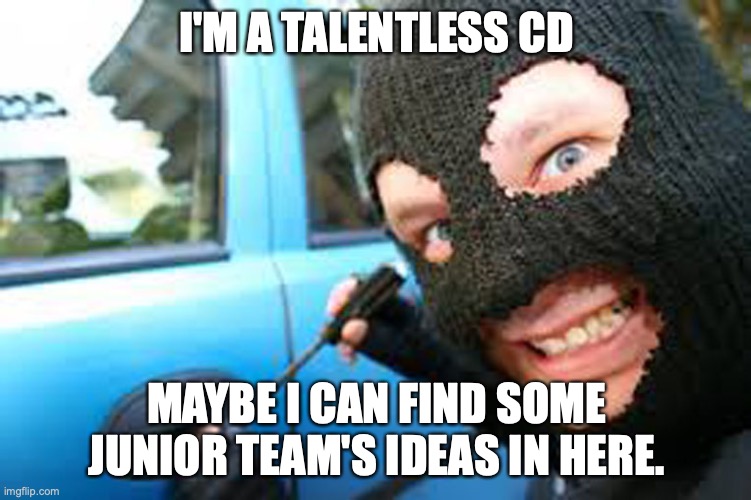
Earlier today I was listening to Dave Dye’s podcast with Rick Sittig. It’s a great chat (find out how he actually saved the lives of a tribal chief’s wife and child while filming a Nissan ad).
An hour or so in, Rick mentions a former boss taking credit for ads that he (Rick) had done, and says that it was theft.
Funnily enough I was having a chat about the same thing with an advertising friend last week. I told him my story of having work stolen by a more senior creative, then he alluded to his (we didn’t have time to go through the whole thing, but we will), then I said I’d also had work stolen by the person who stole his work.
I’m not going to go into my stories, or name the perpetrators, but when I told my friend who they were, he was very surprised at one of them, someone he’d known as a nice guy from earlier in his career. I didn’t have time to tell him that the very same person (team) had stolen another idea off another team (much more senior than me, but technically junior to the thieves). The offended copywriter apparently had to be held back from going into the thieves’ office and kicking the shit out of them. To add insult to injury, it was an excellent idea that the thieves didn’t execute well at all, wasting it. (Oddly enough, I spoke to the ‘victim’ team’s AD recently and he told me that in his first agency they used to have to stick their layouts to the underside of their desk to hide them from the thieving CD who would go around late at night and steal people’s best ideas for himself.)
So I wondered how common it was. I also wondered, given that the same names cropped up in different incidents, how many people had made entire careers, or thousands of pounds in raises, off the back of theft.
I imagine that you are now in one of three categories:
- Never happened to me, but I’d love to know the names…
- I’ve heard about a few of these incidents myself, but it’s just part and parcel of the job. Besides, you should just be able to come up with another idea and show ’em who’s the really creative one.
- That is indeed theft. Money and promotions have gone from their rightful owners into the pockets of others. Who knows what the victims missed out on? Really, people who do that are massive cunts, especially if they’ve already been successful and the victims are juniors.
- Well, I’m obviously not going to reveal the names.
- Sorry. I disagree that people should just get on with it. I know there are plenty more ideas in the sea, but it’s not easy coming up with stone-cold brilliant answers to briefs. The idea that you can do the hard bit, then have someone more powerful just snatch it away is pretty galling. There’s nothing defensible about it. Even if a CD was worried about how well a junior might execute a great idea, he or she could simply help with the execution part and if it became too unbalanced, share the credit. Then everyone gets to have the ad on their reel and the shiny trinket on their shelf. As David Abbott once said, there’s plenty of room for credit, and if two agencies can share the awards for Mouldy Whopper, then two sticky-fingered arseholes could at least allow their victims to partake in the rewards of their own idea.
- So that leaves us with those of you in category 3. Given my experience, I’m going to assume there are a few of you out there who have gone through this (it actually happened to me a third time. Maybe I just look like an easy mug…). I also wonder if, in these times of many CDs and collaborations between different agencies, this is happening even more. Or perhaps, with more witnesses to the creative process (like a kind of analogue version of Blockchain), it’s happening less.
Either way, the people who do it are indeed being cunty, and the people in charge who enable the cunty ones are also quite cunty (although I acknowledge there may be pressures we are unaware of to let it slide).
So let me know, either on the LinkedIn post that this will be attached to, or in the comments. Has it happened to you? Was it senior/junior dominance? Did you even know it was happening? What did you try to do about it? How salty did it make you?
EDIT: my wife has reminded me that, despite using the c-word above, I’m entirely at peace with those thefts. Life has moved on. People have complicated motivations for things. For example, insecurity often breeds unhelpful behaviour. Put more simply, I get think the people involved behaved in a cunty way on those occasions, but we’ve all done that at some point over our lives. Fundamentally, I also think they’re otherwise decent blokes (always blokes), and life’s waaaaaay too short.
Second Edit: never get between a man and his paper: https://www.instagram.com/p/CH-rR9znT3g/
Has Gucci just become thirsty af, or (less credibly) am I not cool?
The other day a thought occurred to me that might have been much more useful when I was 16: being ‘cool’ is a catch-22. (Cool is in inverted commas to denote the degree to which it’s subjective. I’ll drop the extra grammar from here on in, but let’s pretend we all mean kind of the same thing when we use that word.)
It goes like this: trying to be cool is inherently uncool, so you can’t try to be cool and succeed. That means your only avenue to coolness is in not trying to be cool. But if you’re trying to be cool by not trying to be cool, you’re also being uncool. Like an image protruding from a 3-D movie, deliberate cool will always be just out of reach.
Which brings me to Gucci. I was watching their new ad this morning:
I like it. It’s charming and self-deprecating, and, on the face of it, sort-of not trying to be cool by being deliberately cheesy. But my more fundamental reaction is that it’s kind of uncool that Gucci has to make a TV ad at all.
When I was at college, Gucci was in the throes of its Tom Ford renaissance and managed, with no apparent effort, to be the answer to Andre 3000’s question, ‘What’s cooler than being cool?’

I know 1994 was a very different time with very different values, and we’re now in some egalitarian everyone-is-great-no-matter-what-you-wear-or-look-like vibe, but that was mid-nineties cool. The ads didn’t so much advertise as challenge you to be worthy of the depicted scene. The clothes might get you some of the way there, but you’ll never quite manage it the rest of the journey.
I think its coolness managed to transcend advertising, because advertising in inherently uncool. No matter what it looks like it’s saying, it’s actually saying, ‘Coooie! You over there! Come and have a look at me! Like me! Please like me! Go on!’. By spending millions and taking a long time to create them, companies who advertise are clearly making a massive effort to seem appealing, and that, as the kids say, is thirsty af.
For most brands, who are not trying to be cool, but are happily shouting ‘Come and look at me!’ at anyone who might be passing, this is not a problem, but for any brand trying to be cool, it’s a tricky one.
And the category with the largest number of brands trying to be cool is of course fashion. Which is why so many clothing brands try to look as if they’re not really trying to sell you anything, either by just showing the clothes, or by going so far in the ‘bothered?’ direction that they don’t even do that:
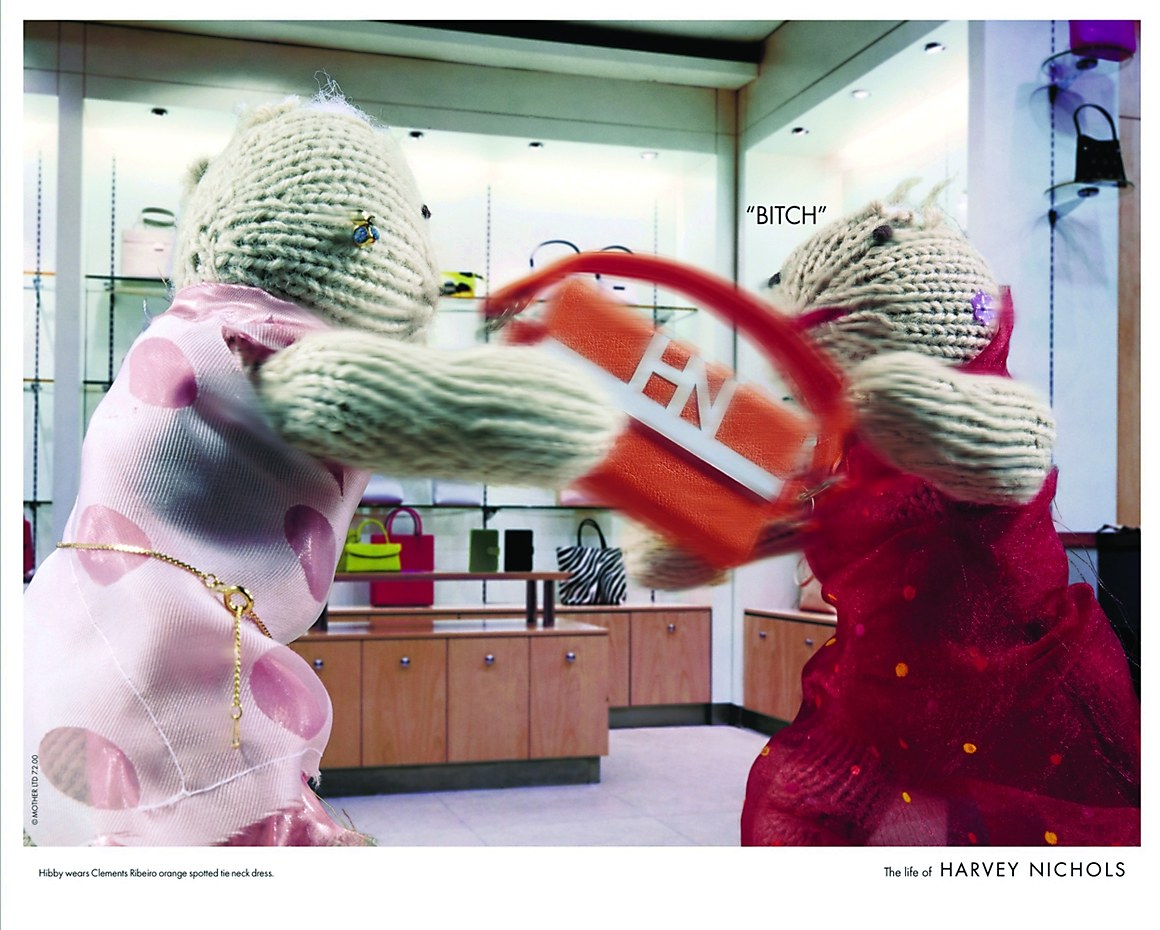
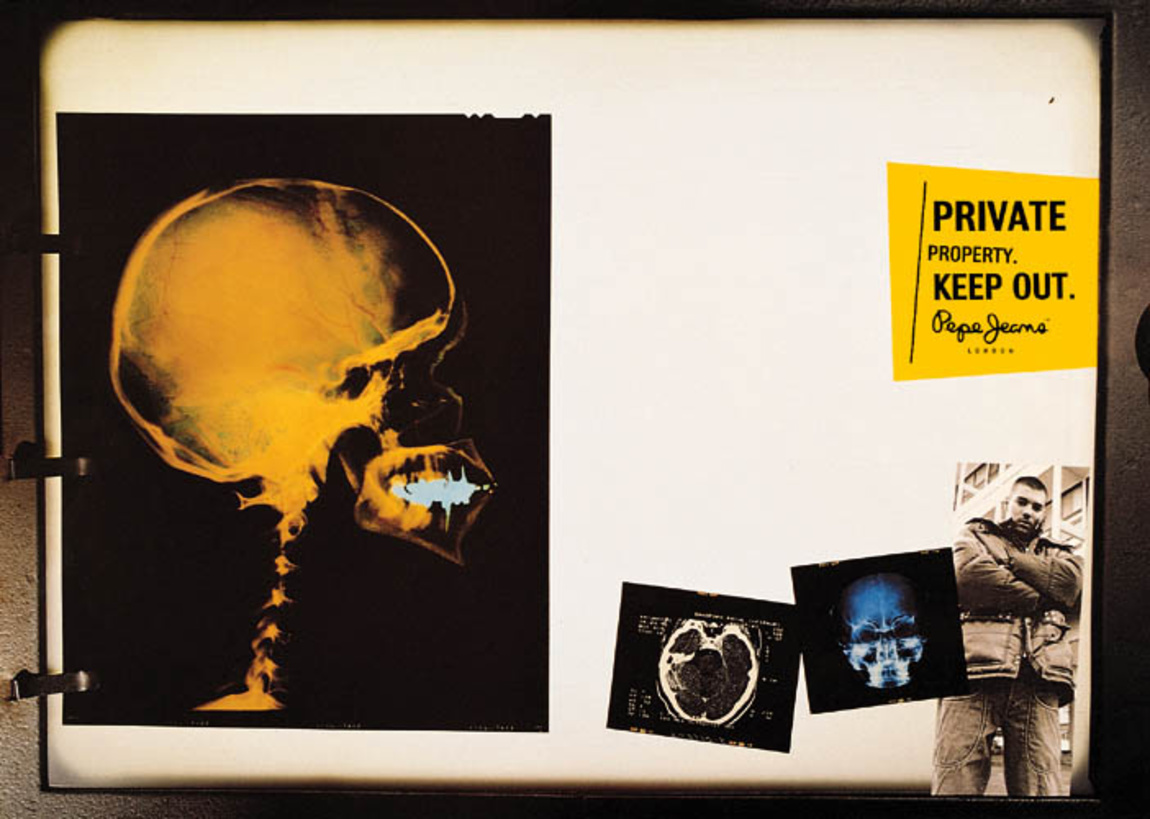

In Gucci’s case, the Tom Ford ads take the same amount of effort as the new one, but then they just let you know the clothes exist and nothing more. The extra dancing, music and funny old man in the background of the latest one are trying much harder to be liked.
So what does that say about Gucci as a brand? Only last year they commissioned Martin Parr to shoot their campaign, and even though it was less glam than 1995, the images are still infused with a massive amount of ‘we couldn’t care less if you like us or not’:
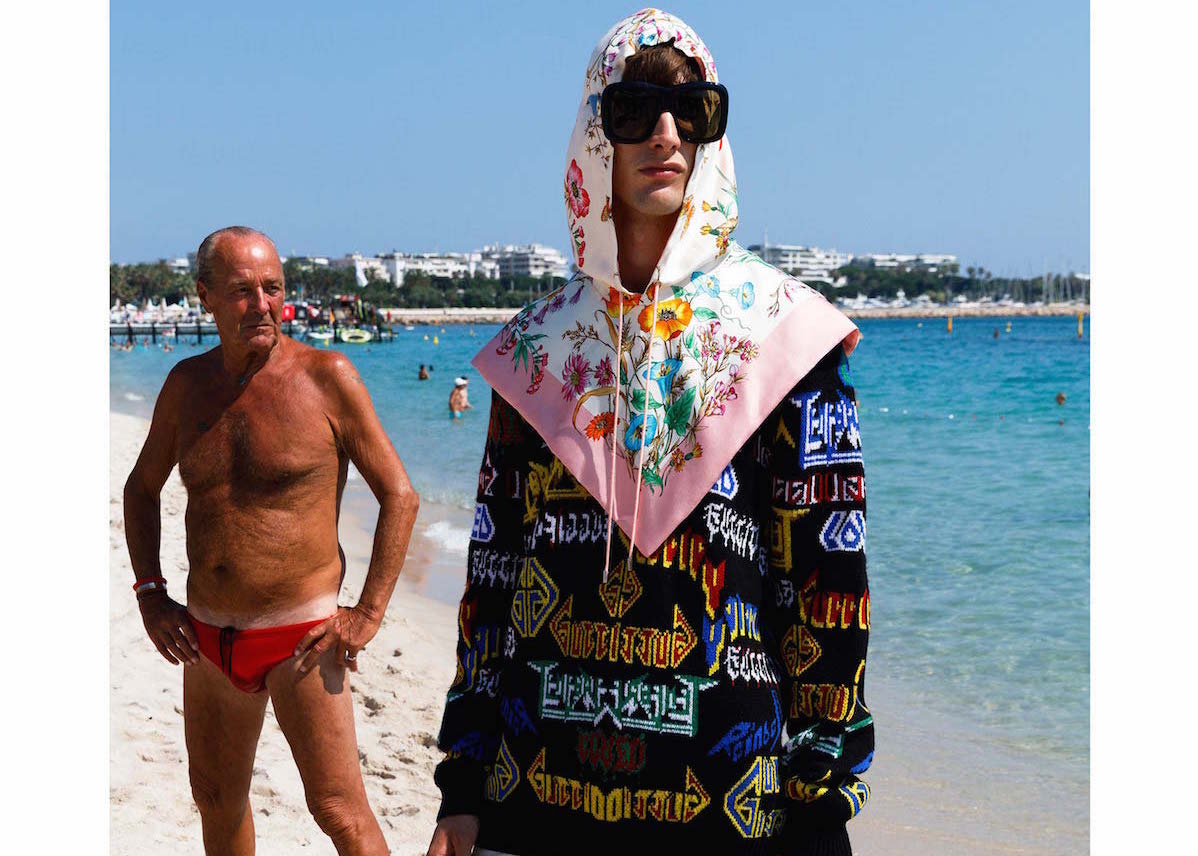
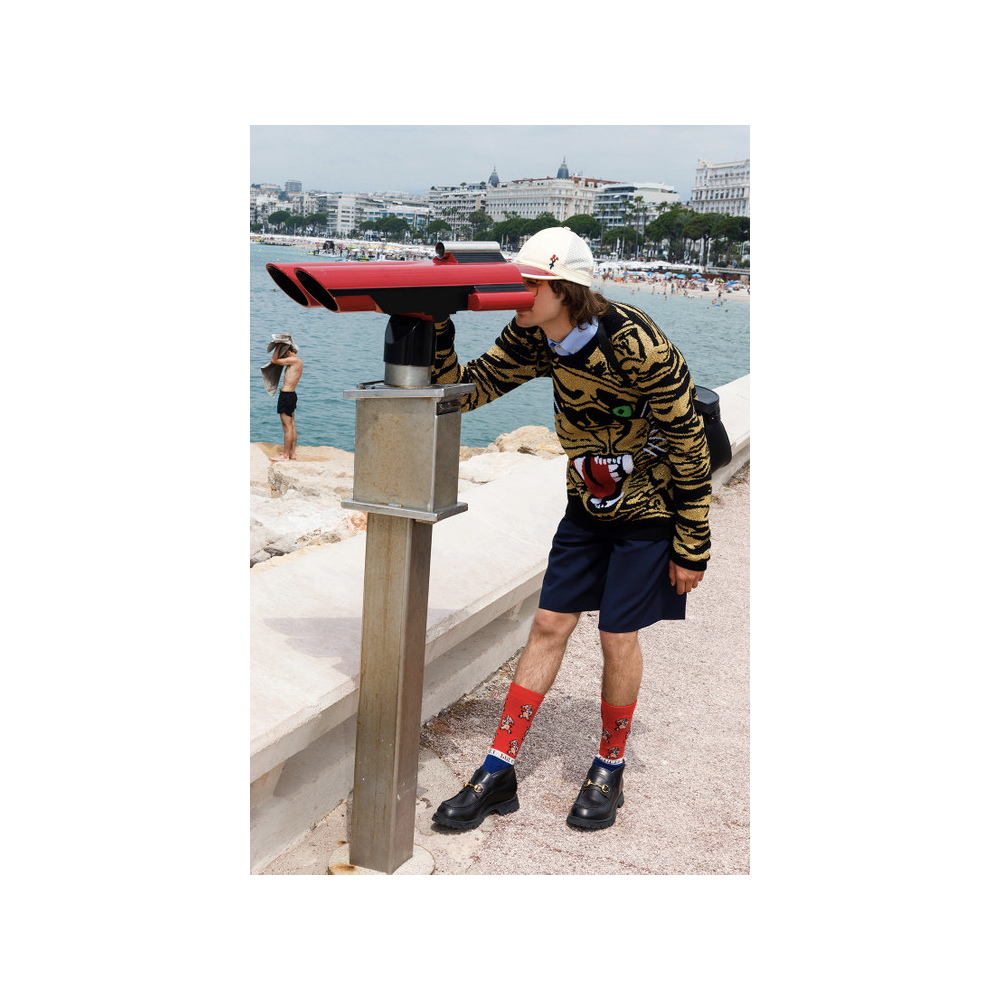
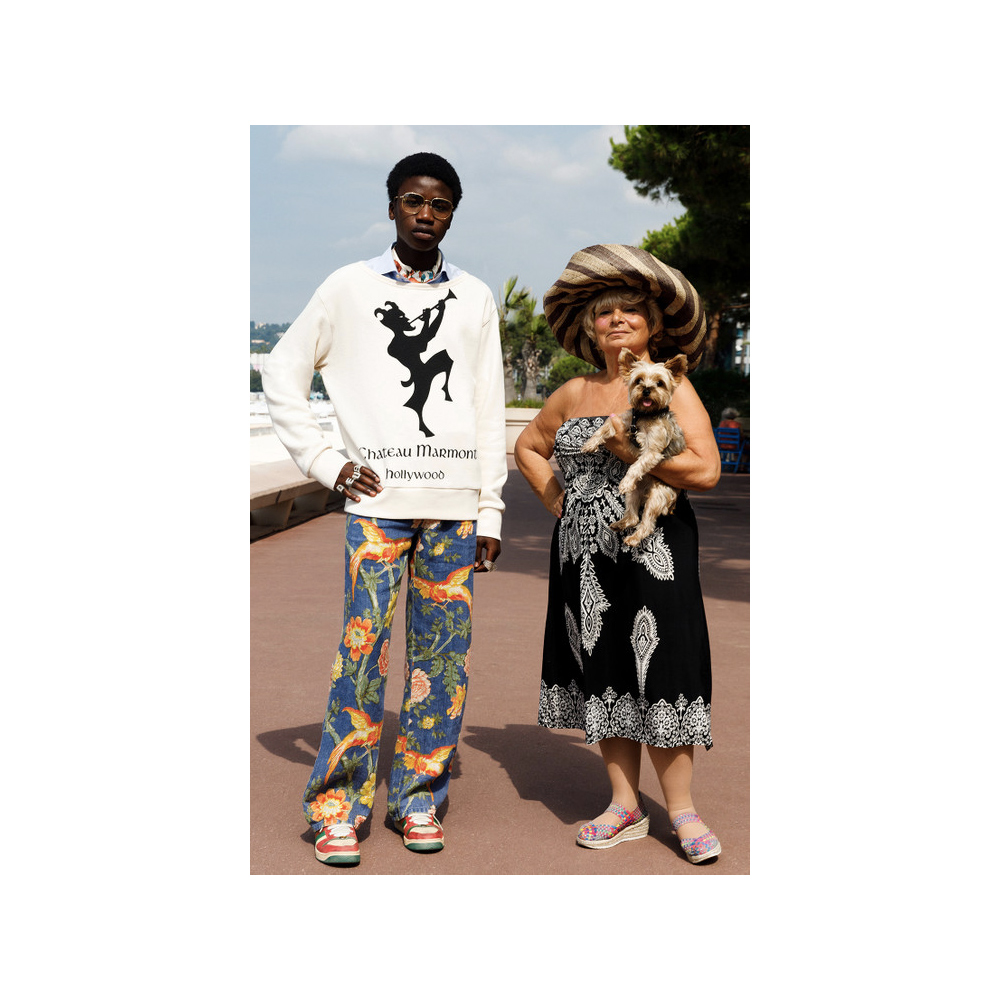
So has Gucci deliberately changed its brand tone? Is it ahead of its time? Have they managed to unlock a new level of cool uncool uncoolcool cool uncool coolification that’s beyond my perception?
No idea, but as I’m writing this in an old Fleetwood Mac T-shirt, I might not be the right person to ask.
Sorry.
Archives